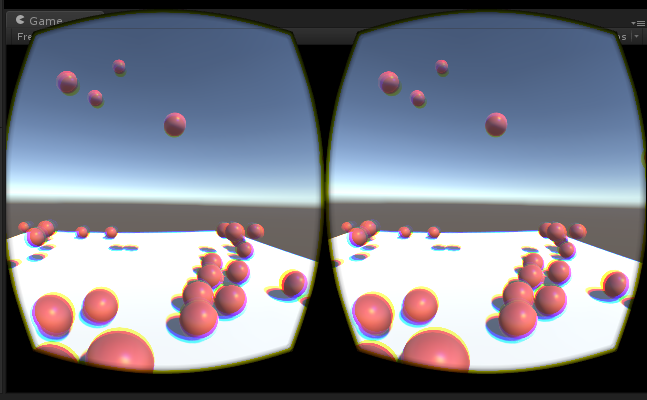So, we have a nice 3D picture that is viewable in a comfortable VR headset with a wide field of view. If this was it and you moved your head, it'd feel like you had a diorama box stuck to your face. Move your head and the box moves along with it, and this is much like holding the antique stereograph device or the childhood View-Master. Fortunately, VR is so much better.
The VR headset has a motion sensor (IMU) inside that detects spatial acceleration and rotation rates on all three axes, providing what's called the six degrees of freedom. This is the same technology that is commonly found in mobile phones and some console game controllers. Mounted on your headset, when you move your head, the current viewpoint is calculated and used when the next frame's image is drawn. This is referred to as motion detection.
The previous generation of mobile motion sensors was good enough for us to play mobile games on a phone, but for VR, it's not accurate enough. These inaccuracies (rounding errors) accumulate over time, as the sensor is sampled thousands of times per second and one may eventually lose track of where they were in the real world. This drift was a major shortfall of the older, phone-based Google Cardboard VR. It could sense your head's motion, but it lost track of your head's orientation. The current generation of phones, such as Google Pixel and Samsung Galaxy, which conform to the Daydream specifications, have upgraded sensors.
High-end HMDs account for drift with a separate positional tracking mechanism. The Oculus Rift does this with inside-out positional tracking, where an array of (invisible) infrared LEDs on the HMD are read by an external optical sensor (infrared camera) to determine your position. You need to remain within the view of the camera for the head tracking to work.
Alternatively, the Steam VR VIVE Lighthouse technology does outside-in positional tracking, where two or more dumb laser emitters are placed in the room (much like the lasers in a barcode reader at the grocery checkout), and an optical sensor on the headset reads the rays to determine your position.
Windows MR headsets use no external sensors or cameras. Rather, there are integrated cameras and sensors to perform spatial mapping of the local environment around you, in order to locate and track your position in the real-world 3D space.
Either way, the primary purpose is to accurately find the position of your head and other similarly equipped devices, such as handheld controllers.
Together, the position, tilt, and the forward direction of your head—or the head pose—are used by the graphics software to redraw the 3D scene from this vantage point. Graphics engines such as Unity are really good at this.
Now, let's say that the screen is getting updated at 90 FPS, and you're moving your head. The software determines the head pose, renders the 3D view, and draws it on the HMD screen. However, you're still moving your head. So, by the time it's displayed, the image is a little out of date with respect to your current position. This is called latency, and it can make you feel nauseous.
Motion sickness caused by latency in VR occurs when you're moving your head and your brain expects the world around you to change exactly in sync. Any perceptible delay can make you uncomfortable, to say the least.
Latency can be measured as the time from reading a motion sensor to rendering the corresponding image, or the sensor-to-pixel delay. According to Oculus's John Carmack:
A total latency of 50 milliseconds will feel responsive, but still noticeable laggy. 20 milliseconds or less will provide the minimum level of latency deemed acceptable.
There are a number of very clever strategies that can be used to implement latency compensation. The details are outside the scope of this book and inevitably will change as device manufacturers improve on the technology. One of these strategies is what Oculus calls the timewarp, which tries to guess where your head will be by the time the rendering is done and uses that future head pose instead of the actual detected one. All of this is handled in the SDK, so as a Unity developer, you do not have to deal with it directly.
Meanwhile, as VR developers, we need to be aware of latency as well as the other causes of motion sickness. Latency can be reduced via the faster rendering of each frame (keeping the recommended FPS). This can be achieved by discouraging your head from moving too quickly and using other techniques to make yourself feel grounded and comfortable.
Another thing that the Rift does to improve head tracking and realism is that it uses a skeletal representation of the neck so that all the rotations that it receives are mapped more accurately to the head rotation. For example, looking down at your lap creates a small forward translation since it knows it's impossible to rotate one's head downwards on the spot.
Other than head tracking, stereography, and 3D audio, virtual reality experiences can be enhanced with body tracking, hand tracking (and gesture recognition), locomotion tracking (for example, VR treadmills), and controllers with haptic feedback. The goal of all of this is to increase your sense of immersion and presence in the virtual world.








































































